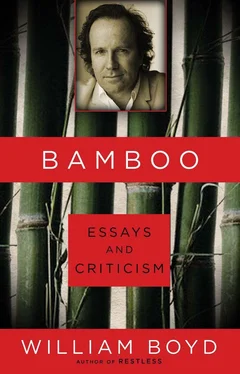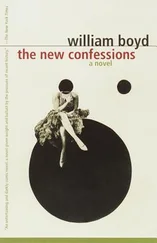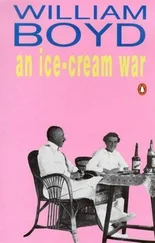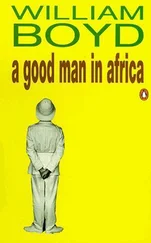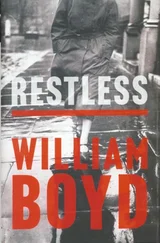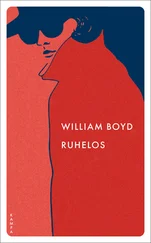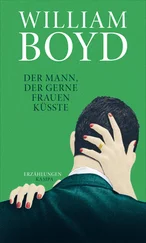Slowly, steadily, the histories of these four emerge as they converse. We learn of Caravaggio’s capture and torture, of Kip’s training in England and his mastering of the precise and delicate art of bomb disposal, of Hana’s experience of the suffering and agonies of the dressing stations — the endless stream of broken and dying young men she tried to tend and comfort. And slowly too we begin to learn more about the English patient. A history begins to take shape, piecemeal, of his life before the war. We discover he was an Arabist and explorer in the Sahara, a scholar-soldier on the T. E. Lawrence model. We are told also of a doomed love affair with an Englishwoman, Katherine Clifton, the wife of a colleague, and its ultimate tragedy, and of his own final crash and rescue from his burning aeroplane by the Bedouin.
Ondaatje’s method and approach in the relating of these contrasting histories are both unusual and admirable. The narrative point of view is omniscient — we enter and quit the minds and experience of the other characters at will. Stylistically too the tone is fluid and changing. Tenses move from the present to the past and back again. Dialogue is presented with and without quotation marks. We transfer easily from meditation to monologue, from reverie to orthodox description. Anecdotes and digressions blend and recur: there is a disquisition on winds, on the fusing of bombs; key texts are referred to repeatedly — Kipling’s Kim and Herodotus’ great History. The language is lucid and vivid, certain moments, certain images, held and rendered with a clarity that gives them the lyric force of an epiphany:
They found my body and made me a boat of sticks and dragged me across the desert. We were in the Sand Sea, now and then crossing dry riverbeds. Nomads, you see. Bedouin. I flew down and the sand itself caught fire. They saw me stand up naked out of it. The leather helmet on my head in flames. They strapped me onto a cradle, a carcass boat, and feet thudded along as they ran with me. I had broken the spareness of the desert.
Back at the villa, Hana and Kip enter into an intense but platonic affair and Caravaggio’s inquisition of the English patient becomes more suspect and thorough. Dosing the patient with morphine to make him more garrulous, Caravaggio begins to dig for the truth. We learn more about events in the Sahara just preceding the war. Caravaggio suspects that the patient is in fact a man called Ladislau Almasy, a Hungarian explorer who, when the war came, flew with the Afrika Corps and guided German spies across the desert behind British lines. Bit by bit, under Caravaggio’s prompting, the identification of Almasy and the English patient becomes more plausible and the events that led to his blazing fall from the air and hellish disfiguration are revealed as a bizarre and tragic confluence of his love affair with Katherine Clifton and an episode of espionage skulduggery and double bluff that went disastrously wrong.
It would be unjust to spell this out in any more detail. The truth about the English patient is revealed by degrees, teased out from the warp and woof of the narrative in a manner that is both bold and confident. Ondaatje diverts and muddles the linear flow of the novel most skilfully here: the structure of the story circles, recoils, coagulates, pauses and digresses while moving us inexorably forward (as it must — one can only tamper and meddle with linearity: the novel will have its way in the end). From time to time — for my taste, at least — the romantic elements grow a little too heady and the moody atmospherics of the cast and their situation veer dangerously towards cliché and self-parody. This is particularly true of the English patient’s love for Katherine Clifton, who emerges as an improbable cross between Virginia Woolf and Mary Astor. One night in the desert she recites some poetry: “I am a man who did not enjoy poetry until I heard a woman recite it to us. And in that desert she dragged her university days into our midst to describe the stars — the way Adam tenderly taught a woman with gracious metaphors … That night I fell in love with a voice. Only a voice. I got up and walked away.”
But these are rare lapses. Normally the rigour of the language effectively counterposes the pitfalls of sentiment and bathos with commendable skill and The English Patient — through the intelligence and originality of its structure and the passion and potency of its telling — marks a significant advance in Michael Ondaatje’s growing reputation.
1998
Albert Camus(Review of Albert Camus: A Life by Olivier Todd)
I would wager that, of all post-war French writers, the best known in Britain, the most widely read and the most cherished is Albert Camus. I use the word “cherished” advisedly because Camus is one of those writers who, as our reading matures, introduces us to the world of literature. Or, to put it another way, Camus is one of those writers who produced one of those books that marks a reader’s life indelibly. I refer of course to L’Etranger. It is like Catcher in the Rye or Catch-22, like Lucky Jim or Brideshead Revisited (and a handful of others) — one remembers vividly the actual reading of the book itself, the sense of unfolding revelation afforded, however modest, of doors being opened, the power of one writer’s imagination impinging irrevocably on your own.
In Camus’s case a reading of L’Etranger was invariably followed by The Myth of Sisyphus, then The Plague, The Fall and so on — the urge to consume the entire oeuvre was a vital part of this writer’s allure. And yet one knew very little about Camus himself, other than he was Algerian, liked soccer, had won the Nobel Prize and died young (he was forty-six) in a car crash.
Which was why the publication of Olivier Todd’s superb biography of the man was so welcome: clear-eyed, compendious, with full access to the Camus’s archive, it fulfilled every expectation and its publication in France last year was a cultural event. It is rare and gratifying to have an English “version” (more of that later) so swiftly.
Camus was born in 1913. Ten months after his birth his father was dead, a conscripted soldier, an early victim of the Battle of the Marne, a tragedy that condemned the surviving members of his family — a wife and two sons — to a life of near abject poverty. Camus, like James Joyce, never forgot the genuine privations of his early life and, also like Joyce, he saw his intellect as a source of escape. He was bright, ambitious and, one senses, remarkably sure of his destiny. As a young man in 1930s Algeria he joined the Communist party (and was expelled), plunged himself into the world of theatre — acting, producing, directing — married and divorced (his first wife was a morphine addict) but all the while nurtured dreams of becoming a writer.
Camus was also tubercular, gravely so, and his life from the age of seventeen was dogged with bouts of ill-health and the enervating pre-antibiotics treatments of his lesioned lungs. In Algeria, in the years before the start of the Second World War, the young Camus established a formidable reputation as a campaigning journalist, a left-wing intellectual with a fully developed social conscience and, it has to be noted, a compulsive womanizer. It was only the outbreak of war that took him to Paris (he was too unwell to be called up) where he began writing L’Etranger in 1940.
The novel was published in 1942, followed shortly after by the philosophical essay The Myth of Sisyphus. Camus, remarkably, was only twenty-eight years old. By the time of the liberation of France he was already acclaimed in intellectual circles and his trenchant journalism in the resistance newspaper Combat added to his renown.
Читать дальше
